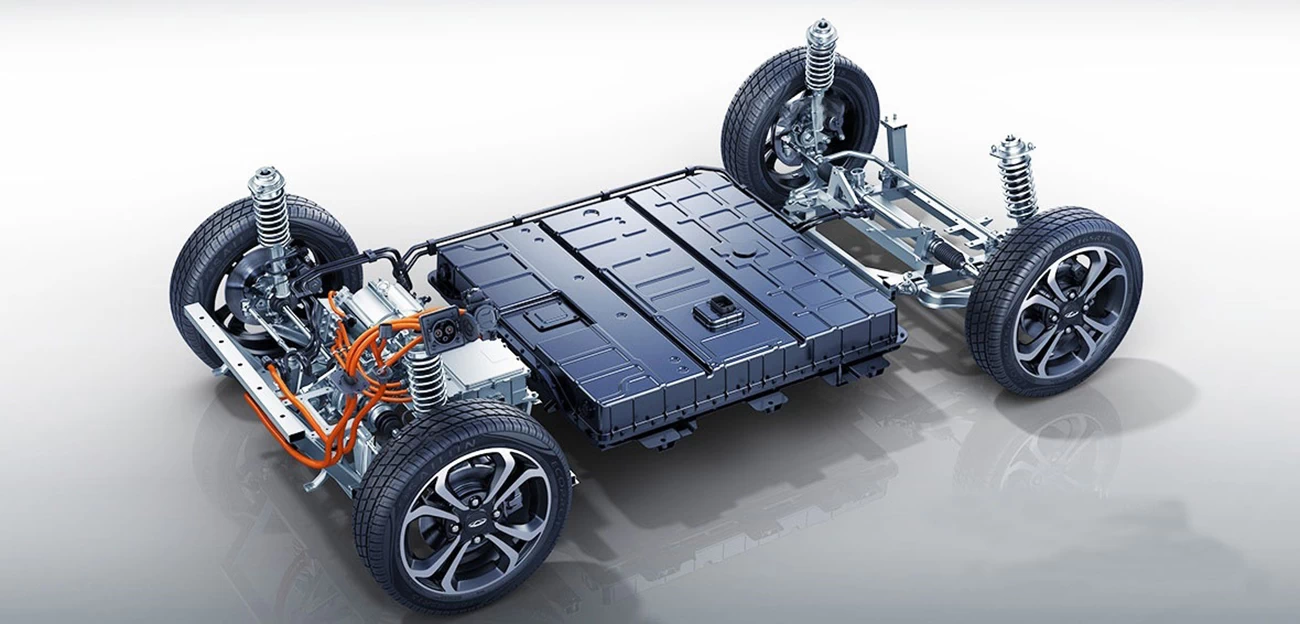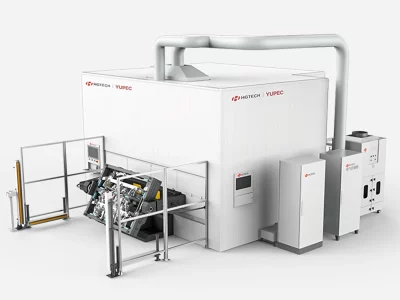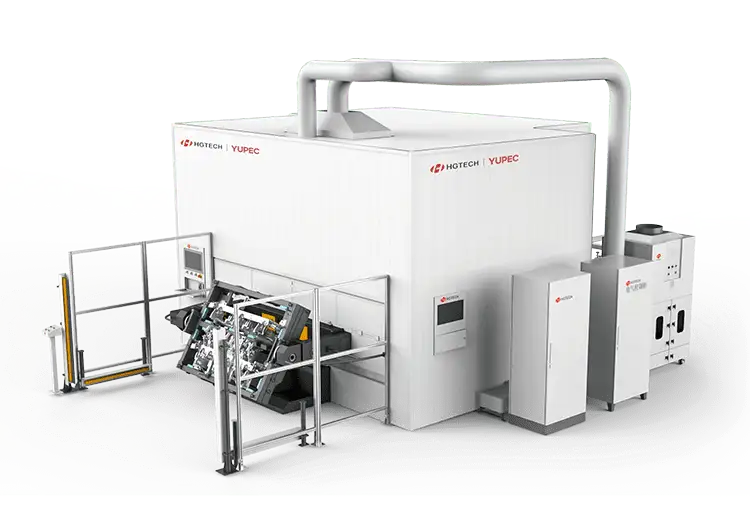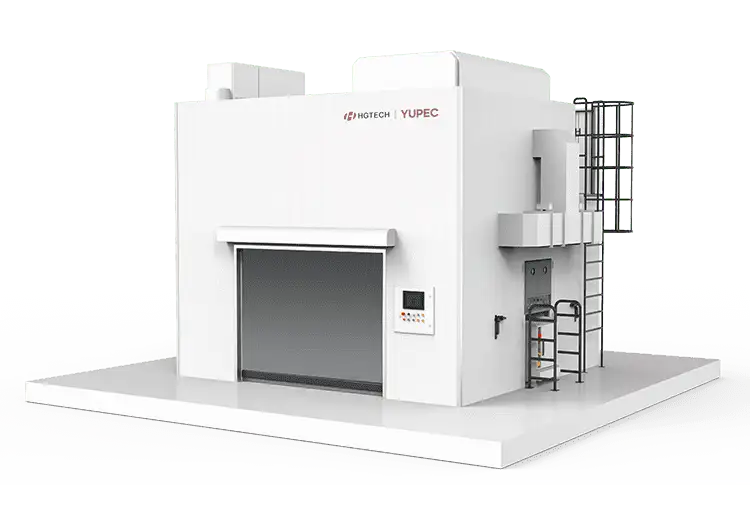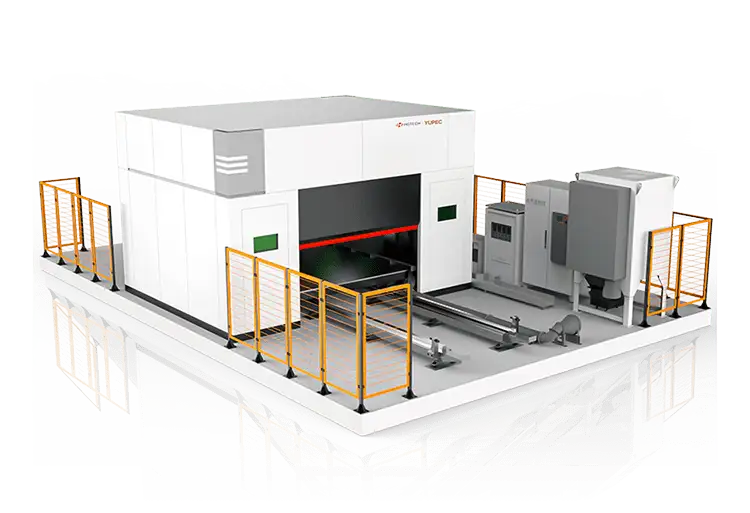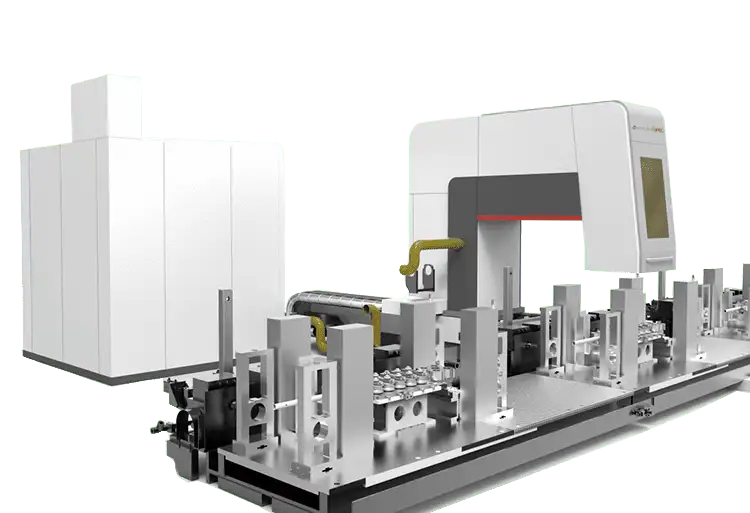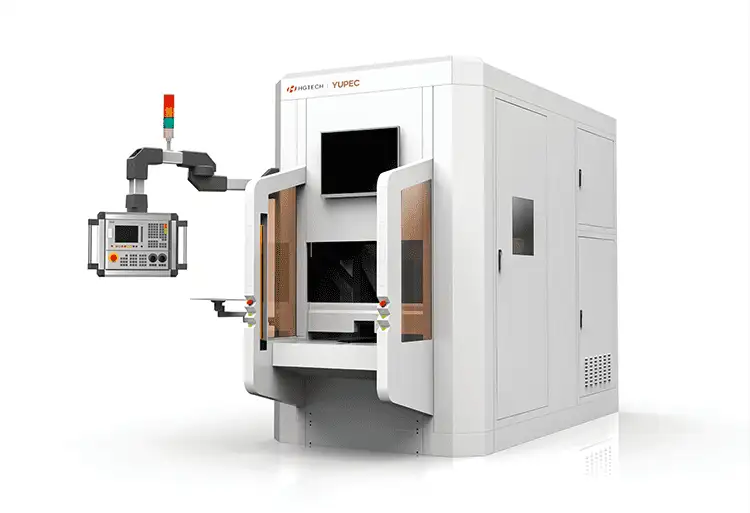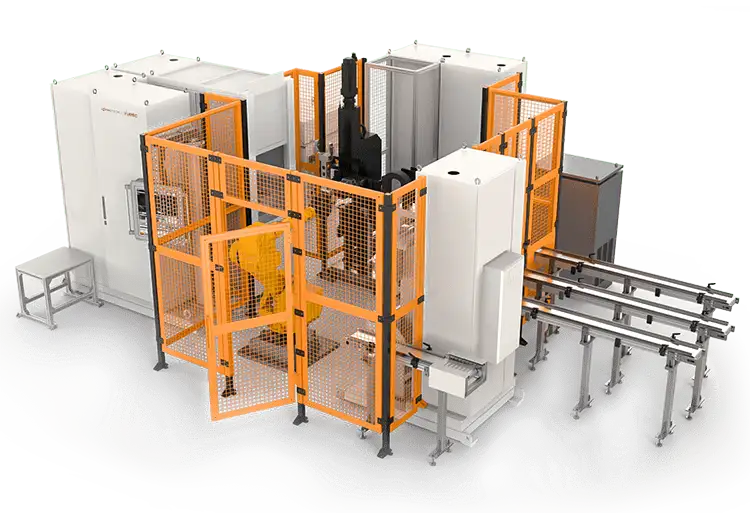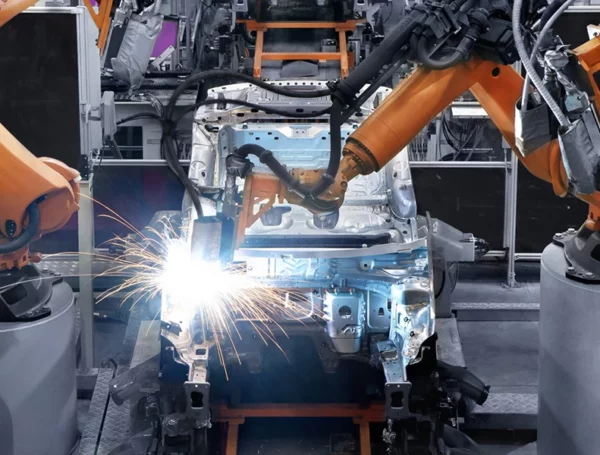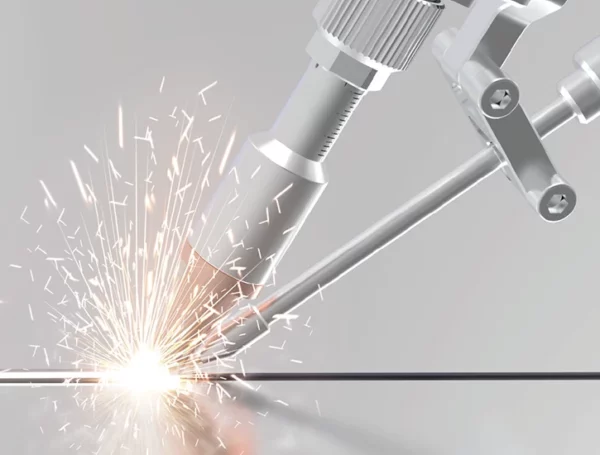Table of Contents
The current pace of electrification in the automotive industry is continually accelerating, with the demand for electric vehicles steadily increasing. To expedite the production of electric vehicles and maximize a company’s efficiency, the key lies in enhancing the modularity and efficiency of electric vehicle battery packs.
Replacing traditional welding techniques with laser welding for the production of power lithium-ion battery modules offers significant advantages. This approach not only significantly increases production speed but also elevates the quality of lithium-ion battery module assembly and the safety of the welding process.
Basic Principles of Laser Welding for Power Lithium-ion Batteries
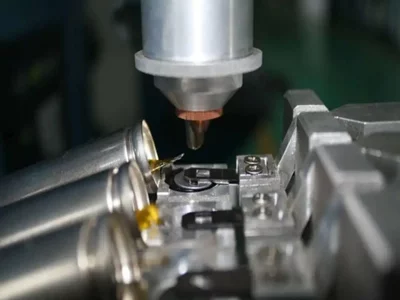
The basic principle of laser welding lithium-ion batteries involves emitting a high-power, high-density laser beam from a laser emitter. After the laser beam is concentrated through a lens, it is directed onto the welding junction of the lithium-ion battery. The high-intensity laser is absorbed by the metal surface of the junction, and, through interaction with a medium material, generates heat. This heat causes the metal surface to melt due to the laser’s high intensity, and it subsequently undergoes rapid cooling. After cooling, the welding material and the junction crystallize, completing the welding process.
Development Status and Technological Advantages of Laser Welding for Lithium-ion Batteries
Development Status of Laser Welding for Lithium-ion Batteries
With the advancement of technology, laser welding machines for lithium-ion batteries have found wide applications in various fields, including automotive, aerospace, machinery manufacturing, petrochemicals, and new energy. Laser welding machines for lithium-ion batteries offer advantages such as high precision, speed, flexibility, efficiency, low heat input, and cost-effectiveness. They can meet the demands of various complex welding requirements, surpassing the capabilities of traditional welding techniques.
Drawbacks of Traditional Welding for Lithium-ion Batteries
Traditional welding methods for power lithium-ion batteries often rely on manual electric welding and gas welding. During the welding process, continuous introduction of shielding gas by workers is required to ensure welding quality. This manual process, where workers manually press and hold the welding points, often results in inconsistent dimensions and varying assembly quality. Moreover, it can lead to subsequent complications during the pairing process in lithium-ion battery pack assembly systems.
Additionally, manual pressure welding not only impacts production efficiency but also poses safety hazards during the welding process. Controlling the pressure accurately within a precise range can be challenging, leading to potential issues, such as loosening of internal connections in the battery casing. This can pose a threat to vehicle safety during real-world usage.Technological Advantages of Laser Welding for Lithium-ion Batteries
In comparison to traditional welding techniques, laser welding, with its high energy density and non-depleting beam profile after beam convergence, offers unique advantages. It minimizes the range of metallurgical phase change in the heat-affected zone, eliminating electrode contamination, tool wear, and enabling the use of various welding materials. Laser welding results in reduced deformation of the weld, higher welding speed, increased precision, and ease of automation.
When applied to welding battery shield casings or narrow conductive pathways in actual lithium-ion battery applications, laser welding is less constrained by delayed melting, which is an issue associated with arc welding. Consequently, it yields smoother welds, aesthetically appealing welding paths, weld penetration resistance, smaller internal metal defects, and eliminates the need for additional post-welding processes, reducing production costs.
Application Scenarios for Laser Welding in the New Energy Industry
Beyond its application in welding power lithium-ion batteries for electric vehicles, laser welding is widely used in the new energy sector. For instance, laser welding is employed in sealing the outer protective casings of new energy power battery cells, using laser conduction welding principles. This ensures the integrity of the seal while allowing the fusion welding of dissimilar materials.
In the context of electric vehicle power batteries, there is a pressing need for lightweight solutions due to the inherent contradiction between their weight and energy density requirements. Battery module disassembly in electric vehicles serves as the backbone of the battery system, providing impact resistance, vibration resistance, and protection. Within the power battery, the tray accounts for 20-30% of the battery system’s weight, making it a significant structural component. Therefore, while ensuring the functional safety of the battery, lightweighting the tray has become one of the primary improvement goals for battery structural components.
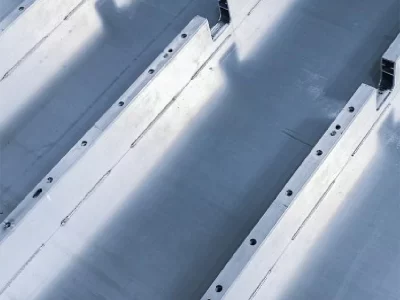
In cases requiring specific protective measures during lithium-ion battery welding operations, laser welding, combined with specific gas mixtures, can maintain proper shielding properties, safeguarding the weld.
Prospects for Laser Welding in Power Lithium-ion Batteries for New Energy Vehicles
In summary, laser welding technology effectively leverages the advantages of laser beams to perform welding tasks. In the future, laser welding technology will offer greater flexibility in addressing the welding requirements of lithium-ion battery modules, accommodating various materials and shapes. It is set to become an emerging welding technology that the manufacturing industry urgently requires.
Simultaneously, as power lithium-ion battery modules serve as the critical core of new energy vehicles, they impact vehicle performance and user safety experiences. Promoting the widespread adoption of automated laser welding production lines in the new energy lithium-ion battery industry is the development goal of major laser enterprises.


